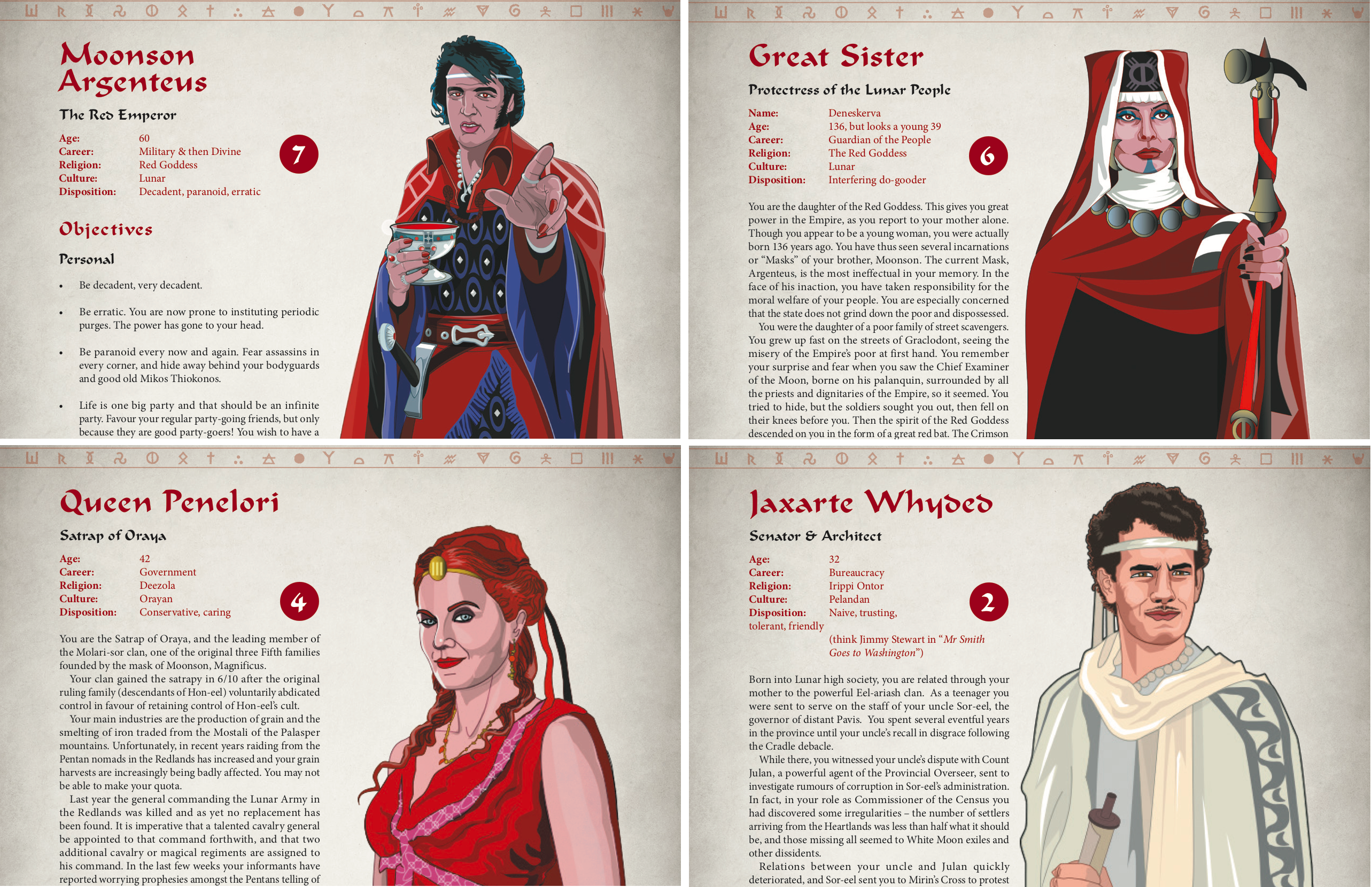Source books can be tricky to produce. At their best they provide a solid setting full of potential situations; at their worst they can be impenetrable text that doesn’t give up any of the setting's real secrets. A Rough Guide to Glamour lands among the former examples by providing a look into the heart of the Lunar Empire and some of those who shape the empire over the short and long term.

Welcome back to our Jonstown Reviews.Do you have a piece of your Glorantha to share? Send us a message. A PDF copy of A Rough Guide to Glamour was provided to the reviewer for the purpose of this review.
None of the Red Goddess’ secrets will be revealed here; we leave illumination to those who are expert at it. But what can be revealed is that if you are looking for a place to start your journey as a Lunar player or game master, A Rough Guide to Glamour can provide that starting point and more.
Glorantha as presented in Runequest: Role Playing In Glorantha paints the Lunar Empire as the villain and its heroes as tools of an oppressive system. The Empire’s wax and wane provides a backdrop to the greater events that take place in Dragon Pass and the lands surrounding. At best this paints a two-dimensional picture of this force of nature and history. A Rough Guide to Glamour goes a long way towards changing that image. In particular, the Guide pushes back against the singular Romanization of the empire and shows off the other cultural influences that went into forging the Lunar narrative.
Among the content, a couple things stand out. In particular, the characters are strong. You get to know the Moonson in great detail and the cast of characters that surround the Red Emperor and help him rule the vast empire. Anyone looking for a new Lunar cult will not be disappointed with the Cult of Glamour. Glamour is the goddess of the city and her cult writeup is extensive. The rest of the content covers the city of Glamour itself and the history of the empire. A gazetteer provides a larger view of the empire itself.
Welcome back to our Jonstown Reviews.Do you have a piece of your Glorantha to share? Send us a message. A PDF copy of A Rough Guide to Glamour was provided to the reviewer for the purpose of this review.
None of the Red Goddess’ secrets will be revealed here; we leave illumination to those who are expert at it. But what can be revealed is that if you are looking for a place to start your journey as a Lunar player or game master, A Rough Guide to Glamour can provide that starting point and more.
Glorantha as presented in Runequest: Role Playing In Glorantha paints the Lunar Empire as the villain and its heroes as tools of an oppressive system. The Empire’s wax and wane provides a backdrop to the greater events that take place in Dragon Pass and the lands surrounding. At best this paints a two-dimensional picture of this force of nature and history. A Rough Guide to Glamour goes a long way towards changing that image. In particular, the Guide pushes back against the singular Romanization of the empire and shows off the other cultural influences that went into forging the Lunar narrative.
Production, Design, and Art
Production values for A Rough Guide to Glamour are high. The layout is friendly to the eyes and there are very few instances of just walls of text without at least a heading breaking it up. Artwork is plentiful and ranges in style and inspiration. If you are a fan of maps, you will not be disappointed. For Glamour itself, there are several maps and each shows the player something a little different.Content
A Rough Guide to Glamour has a lot going on. There is a brief rundown of the history of the guide itself and the reader gets a real sense of how many hands have touched the guide. One gets a real sense of the passion the authors had for the subject matter.Among the content, a couple things stand out. In particular, the characters are strong. You get to know the Moonson in great detail and the cast of characters that surround the Red Emperor and help him rule the vast empire. Anyone looking for a new Lunar cult will not be disappointed with the Cult of Glamour. Glamour is the goddess of the city and her cult writeup is extensive. The rest of the content covers the city of Glamour itself and the history of the empire. A gazetteer provides a larger view of the empire itself.


